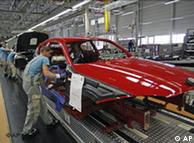英文人行道 et cetera, et cetera.單字說明
A Capitalist Jolt for Charity

Sandy Huffaker for The New York Times
EPals has for-profit and nonprofit arms. Candace Pauchnick, standing, uses its tools in her class.
Published: February 24, 2008
IN the summer of 2005, Miles Gilburne and Nina Zolt had long talks over dinner in their Washington home about what to do next. For more than six years, Mr. Gilburne, a former AOL executive, and his wife, Ms. Zolt, a former lawyer, had supported a philanthropy that used books and online tools to enhance skills of inner-city students.
Skip to next paragraph 
Doug Kanter/Bloomberg News
Bill Gates of Microsoft and Muhammad Yunus, who won a Nobel for his microfinance venture, have been pioneers in harnessing business means for socially conscious ends. The Gates Foundation treats its grants like venture capital investments.

The XO machine from One Laptop Per Child, left, and the Intel Classmate PC feature ePals services, which connect students and classrooms worldwide.

Doug Mills/The New York Times
Edmund Fish, C.E.O. of ePals, says “a learning social network is not an oxymoron.”

Doug Mills/The New York Times
Miles Gilburne and Nina Zolt are the force behind the firm.
The program, which Ms. Zolt directed, had been moderately successful. Students liked writing online about books and sharing their ideas with Internet pen pals, including adult mentors. Many teachers embraced the project, called In2Books, and participating students outscored their peers in standardized tests.
Still, the costly venture grew only gradually, classroom by classroom. The couple had put $10 million into the charity, a “meaningful portion” of the family wealth, Mr. Gilburne says. “It was enough money that I did lie awake at night thinking about the size of the checks,” he recalls.
As philanthropy, the couple’s efforts, however worthwhile, weren’t sustainable. But their vision of using the Internet for communication and collaboration to improve education has taken on a new life — as a business.
Today, the once-struggling venture has morphed into a primarily for-profit enterprise. And the striking transformation of In2Books is emblematic of a larger trend: charities are changing their spots and making use of some of capitalism’s virtues.
The process is being pushed forward by a new breed of social entrepreneurs who are administering increasing doses of bottom-line thinking to traditional philanthropy in order to make charity more effective.
To make a fresh start, Mr. Gilburne attracted like-minded angel investors, and at the end of 2006 the group bought a for-profit company, ePals Inc., to expand on the original mission and support the foundation. The ePals company has grown and now offers classroom e-mail, blogs, online literacy tools and Web-based collaborative projects on subjects like global warming and habitats.
EPals says 125,000 classrooms around the world are using at least some of its free tools, reaching 13 million students, and its ambition is to become a global “learning social network.”
National Geographic is to announce this week that it is investing in ePals, based in Herndon, Va., and will supply educational content for the ePals learning projects. Worldwide distribution should get a lift from Intel, which will soon ship its Classmate laptops, designed for students in developing nations, with the ePals icon on the screens. And ePals is also offered for use on the low-cost computers from One Laptop Per Child, a nonprofit group trying to bring the content and experience of the Internet to children in developing countries worldwide.
Various versions of efforts like this are appearing across the philanthropic landscape as business-minded donors, epitomized by Bill and Melinda Gates and their foundation, have treated their charitable contributions more like venture capital investments. They seek programs that can be catalysts for broad changes in fields like health, education and the environment, they measure performance and results, and they encourage nonprofits to become more self-sustaining.
Yet to have the greatest possible impact, a further step down the capitalist road is sometimes needed, analysts and others in the field say. Muhammad Yunus, the microfinance pioneer and Nobel laureate, calls this next step the “social business.” The goal, according to Mr. Yunus, is to create ventures that more than pay for themselves — in other words, turn a profit.
Social business entrepreneurs, he writes, can help “make the market work for social goals as efficiently as it does for personal goals.”
PHILANTHROPIES are discovering that for-profit status and financing can be a useful tool. For example, many microfinance lenders, modeled after Mr. Yunus’s project, the Grameen Bank in Bangladesh, aim to make the crossover to profit-making institutions.
Mozilla, the nonprofit foundation that developed the open-source Web browser Firefox, decided that it needed a for-profit unit to accelerate its business activities and gain market share against Microsoft’s Internet Explorer. The business unit is freer to spend on marketing, charge for software service and technical support, and pay to compete for engineering talent in Silicon Valley.
Likewise, Google.org, the search giant’s corporate foundation, chose for-profit status to be able to easily make investments in for-profit companies including alternative energy start-ups like eSolar and Makani Power.
“Capitalism is a very mutable, flexible beast, and what we’re seeing is social entrepreneurs addressing some of these social challenges in profoundly different ways than traditional nonprofit organizations,” said John Elkington, co-author with Pamela Hartigan of “The Power of Unreasonable People: How Social Entrepreneurs Create Markets that Change the World,” a new book that was handed out last month to attendees at the World Economic Forum in Davos, Switzerland.
Even among its hybrid peers, ePals has evolved into an unusual combination of a business and a social venture. When Mr. Gilburne and Ms. Zolt established the for-profit arm in 2006, they attracted like-minded investors, acquired ePals Inc. and began hiring talented staff. They gave the original education foundation a 15 percent stake in the ePals company, and its endowment will grow if the business prospers. The nonprofit division is focusing on educational research and bringing technology into classrooms.
But the company is where the action is. “This needs to be a large business to have a really significant social impact,” Mr. Gilburne said. “We couldn’t do what we’re doing as a nonprofit.”
Very few nonprofits get big. Only 144 of the more than 200,000 nonprofits established since 1970 had grown to $50 million or more in revenue by 2003, according to a study published last year by the Bridgespan Group, a nonprofit consulting firm that advises philanthropies.
With the rising influence of social entrepreneurs in philanthropy, many nonprofits have sought to generate revenue to become more self-sustaining. But it is still rare for a nonprofit to cross the chasm to become mainly a profit-seeking business, as in the ePals experience.
“It’s tricky, but it makes sense when the business is highly aligned with the mission of the social entrepreneurs,” said Jeffrey L. Bradach, a managing partner of Bridgespan.
As a for-profit business, ePals can more easily attract financing for growth. But outside investors raise the risk that the original social ideals will be lost in a single-minded pursuit of profit. Mr. Gilburne has tried to avoid that pitfall by gathering a stable of angel investors among his longtime business friends, who bring not only money but also a shared belief in the promise of the Internet to improve education.
The group includes Stephen M. Case, the former chief executive of AOL; Mitchell Kapor, the founder of the early spreadsheet maker Lotus Development and an open-source software supporter; and Yossi Vardi, an Israeli Internet entrepreneur.
“None of our investors are interested just in making another financial score,” Mr. Gilburne said.
AFTER pooling their money, the angel investors bought the ePals company in December 2006 for an undisclosed price. Mr. Gilburne had watched ePals for years, starting when he was at AOL in the 1990s, and he saw it as the foundation on which to build an educational social network.
EPals started as a Web-based electronic pen-pal service in 1996, offering point-and-click tools that teachers could use to control how students use e-mail. A teacher in California, for example, set the controls so her class could communicate online only with a class in China that was engaged in a joint cultural exchange project.
Since the angel investors came aboard in 2006, the ePals work force has more than doubled, to 43, and the company continues to hire. It has improved the e-mail and blogging software and added links to outside resources, like National Geographic’s digital library, to its Web-based software for online projects.
“We were a small company with little capital,” said Tim DiScipio, a founder of the original ePals, who is the chief marketing officer of the revamped company under its new ownership. “But now we have the resources to really pursue the vision of social learning over the Internet.”
Until last fall, ePals charged $3 to $5 a year for each student e-mail account, but the service is now free. The effect of free distribution was immediate and dramatic. The number of registered users has nearly doubled, to 13 million, since September.
The growth and ambition of ePals have impressed National Geographic enough to make an investment and forge a partnership.
“We’re looking at them as a global network to distribute National Geographic content,” explained Edward M. Prince, the chief operating officer of the venture arm of the nonprofit scientific and educational organization.
The ePals team is betting that it can build a worldwide social network in education — a serious, controlled version of Facebook, for students in kindergarten through 12th grade. “When markets go digital, they go collaborative and sharing,” said Edmund Fish, the chief executive of ePals and a former executive of AOL, where he oversaw online education offerings. “That can happen in education, too. A learning social network is not an oxymoron.”
Even the basic social networking of ePals e-mail exchanges, teachers say, helps improve writing skills and stirs curiosity about other cultures. Mirjana Milovic, a teacher in Kragujevac, Serbia, says ePals has helped the 120 students in her school with their English-language skills. Their correspondents in Alabama and Kansas have also learned that jeans and Nike shoes are popular in Kragujevac but that the McDonald’s in town closed for lack of business.
“We usually prefer our domestic food,” wrote Marija, an 18-year-old.
Candace Pauchnick, who teaches English and sociology at Patrick Henry High School in San Diego, has been using ePals for what she calls “virtual field trips.” In their online exchanges with students in Italy, China and the Czech Republic, her students have learned about family life and political systems in foreign lands and improved their writing skills.
“If they were just writing for me, they wouldn’t be as careful,” Ms. Pauchnick said. “But they’re writing for a student in another country. It’s not drudgery for them. They buy in and they enjoy it.”
Ms. Zolt, the chief program architect of ePals, endorsed the for-profit route but insisted that the digital network also provide a free searchable database for educational research.
“The promise here is to be able to study, with vast amounts of real-time data, how children learn,” she said.
Scholars are enthusiastic. “Its potential is very exciting,” said Linda B. Gambrell, a professor of education at Clemson University, who is one of the academic advisers of ePals. “This should help us quicken the pace of translating innovative research into best practices in the classroom.”
Like many start-up companies, the revamped ePals is still working on its business model. Mr. Gilburne, the chairman, says it will pursue corporate sponsors for certain project areas. These could be part of a company’s community and social responsibility activities, providing approved adult experts to help students online. For example, General Electric might sponsor ePals’ global warming section by providing environmental experts as online mentors, Mr. Gilburne said, or perhaps Intel or I.B.M. would help in engineering projects.
There are commerce opportunities, Mr. Gilburne added, for education publishers who might want to market books or curriculum materials for home-school students over ePals.
Eventually, Mr. Gilburne said, advertising will be part of the mix. “But we’ll go gingerly to figure out what is appropriate and doesn’t impose on the classroom,” he said.
The failure rate for entrepreneurs — whether social or purely capitalist — is high. Still, ePals’ backers are betting that it is worth the risk. “These kinds of opportunities to do well and do good at the same time don’t grow on trees,” said Mr. Kapor, the ePals investor and a philanthropist. “But I do think that ePals could be one of them.”
![[See enlarged image]](http://s.wsj.net/public/resources/images/OB-BC200_homeFr_20080228190607.gif)


























